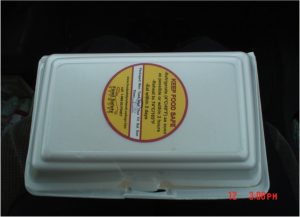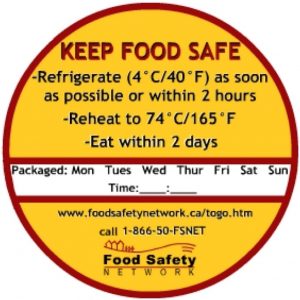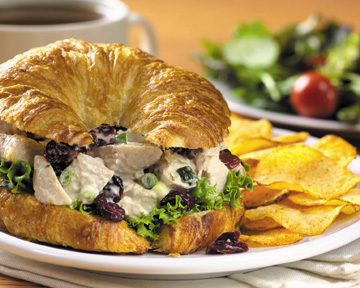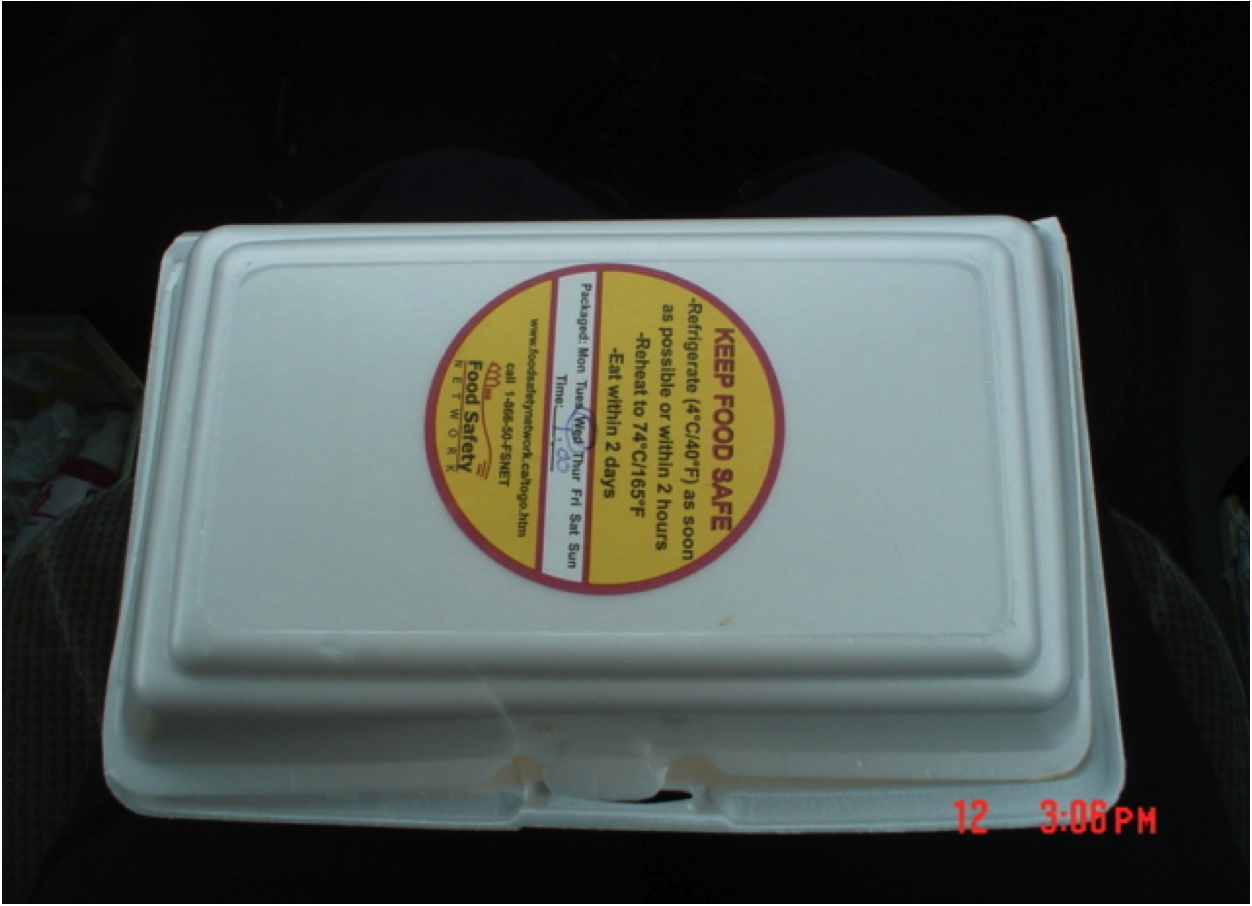A diner who asked for a ‘doggy bag’ to take home her half-finished meal was surprised to be asked to sign a legal waiver.
 The complicated form is being issued to customers at a restaurant part-owned by celebrity chef Raymond Blanc before they can take any of their food away with them.
The complicated form is being issued to customers at a restaurant part-owned by celebrity chef Raymond Blanc before they can take any of their food away with them.
Brasserie Blanc in Oxford refused to allow the diner to take home her unfinished tarte flambee – a pizza-style dish – before she agreed to indemnify them ‘from and against all claims, losses, liabilities, damage, costs, charges, fines, penalties and expenses’ that could arise from her eating it at home.
The restaurant said the document was designed to stop diners from suing it if they took the £11.80 dish home, failed to store or refrigerate it properly and became ill. But managers admitted they had never been sued.
Written in convoluted legalistic jargon – and bad English – the ‘indemnity form’ asks diners to ‘confirm that I will be taking away [the food or drink] into the house/home (“the premises”) for the consumption (“function”)’.
It continues: ‘I and my guests will then be able to consumer [sic] this food or drink.’ But the diner must fulfil two requirements.
Firstly, they must ‘ensure that all applicable licensing laws are complied with’ and ‘ensure that no sales of liquor are made on the premises’.
Secondly, they must: ‘Observe and comply with all legal requirements relating to food and its preparation, food safety and health and safety, together with any other requirements affecting catering premises and/or premises for the preparation of food (as defined by the Food Safety Act 1990, whether statutory or otherwise) and all new relating Regulation.’
Brasserie Blanc said the form is a standard one provided by environmental health officers and used by many restaurants. A spokesman said: ‘Although we don’t have to use it, staff are strongly recommended to as we don’t have a licence to serve takeaway food.’
 Restaurant critic Richard Harden, co-founder of Harden’s London Restaurants guides, said: ‘I would never ask for a doggy bag in the first place. But even if I were to, I don’t see the use of this form.
Restaurant critic Richard Harden, co-founder of Harden’s London Restaurants guides, said: ‘I would never ask for a doggy bag in the first place. But even if I were to, I don’t see the use of this form.
‘I’ve never heard of such a thing. This is just more nonsense designed to interfere with the operation of common sense.’
Assessing management perspectives of a safe food-handling label for casual dining take-out food
Food Protection Trends, Vol 29, No 10, pages 620-625
Brae V. Surgeoner, Tanya MacLaurin, Douglas A. Powell
Faced with the threat of food safety litigation in a highly competitive industry, foodservice establishments must take proactive steps to avoid foodborne illness. Consumer demand for convenience food, coupled with evidence that consumers do not always engage in proper food-safety practices, means that take-out food from casual dining restaurant establishments can lead to food safety concerns.
A prescriptive safe food-handling label was designed through a Delphi-type exercise. A purposive sample of 10 foodservice managers was then used to evaluate the use of the label on take-out products. Semi-structured in-depth interviews focused on the level of concern for food safety, the value of labelling take-out products, perceived effectiveness of the provided label, and barriers to implementing a label system. Interviews were audiotaped and transcribed, and the data was interpreted using content analysis to identify and develop overall themes and sub-themes related to the areas of inquiry. It was found that labeling is viewed as a beneficial marketing tool by which restaurants can be differentiated from their competitors based on their proactive food safety stance.
 Any restaurant that knows food safety will bring the clamshell to the table: no one wants your germs back in the kitchen.
Any restaurant that knows food safety will bring the clamshell to the table: no one wants your germs back in the kitchen. “I would rather have a bad review for keeping people safe than making people sick. It’s not about ripping people off, honestly.”
“I would rather have a bad review for keeping people safe than making people sick. It’s not about ripping people off, honestly.”




 Garden, because “when you are here, your are family."
Garden, because “when you are here, your are family." which became stuck in their throat and required a trip to hospital to have it removed, after eating food straight out of a take-away container, which had "softened" as a result of their meal being heated up in a microwave oven.
which became stuck in their throat and required a trip to hospital to have it removed, after eating food straight out of a take-away container, which had "softened" as a result of their meal being heated up in a microwave oven.(1).jpg) Which was exactly one of our thoughts when we began experimenting with food safety stickers about five years ago.
Which was exactly one of our thoughts when we began experimenting with food safety stickers about five years ago.(1).jpg)
.jpg) "With leftovers, people need information the moment they pull that container or clamshell package from the fridge," said Doug Powell, a K-State associate professor of food safety. "How long has it been in the fridge? Is it still safe? Our approach was to provide practical information, right on the container."
"With leftovers, people need information the moment they pull that container or clamshell package from the fridge," said Doug Powell, a K-State associate professor of food safety. "How long has it been in the fridge? Is it still safe? Our approach was to provide practical information, right on the container.".jpg) "We strive to provide the right food safety message in the right setting," Powell said. "Hand washing information should go over sinks and the back door of toilet stalls. Food preparation information should go in the back kitchen. Stickers with safe food handling information should go on the clamshell containers that people take home and put in the fridge. That’s where the learning moment is."
"We strive to provide the right food safety message in the right setting," Powell said. "Hand washing information should go over sinks and the back door of toilet stalls. Food preparation information should go in the back kitchen. Stickers with safe food handling information should go on the clamshell containers that people take home and put in the fridge. That’s where the learning moment is.".jpg) They were diagnosed with food poisoning tracked back to the "doggie bags" taken and eaten at home. Amil Aga, epidemiological supervisor at the hospital, reached the conclusion that the leftovers had been left outside rather than in refrigeration for several hours until the extended family got home.
They were diagnosed with food poisoning tracked back to the "doggie bags" taken and eaten at home. Amil Aga, epidemiological supervisor at the hospital, reached the conclusion that the leftovers had been left outside rather than in refrigeration for several hours until the extended family got home. Ryan Van Groningen of Van Groningen & Sons Farms, which sells watermelons under the Yosemite Fresh brand, said,
Ryan Van Groningen of Van Groningen & Sons Farms, which sells watermelons under the Yosemite Fresh brand, said, Great idea.
Great idea.  In 2004, my group undertook research to:
In 2004, my group undertook research to: Our
Our 